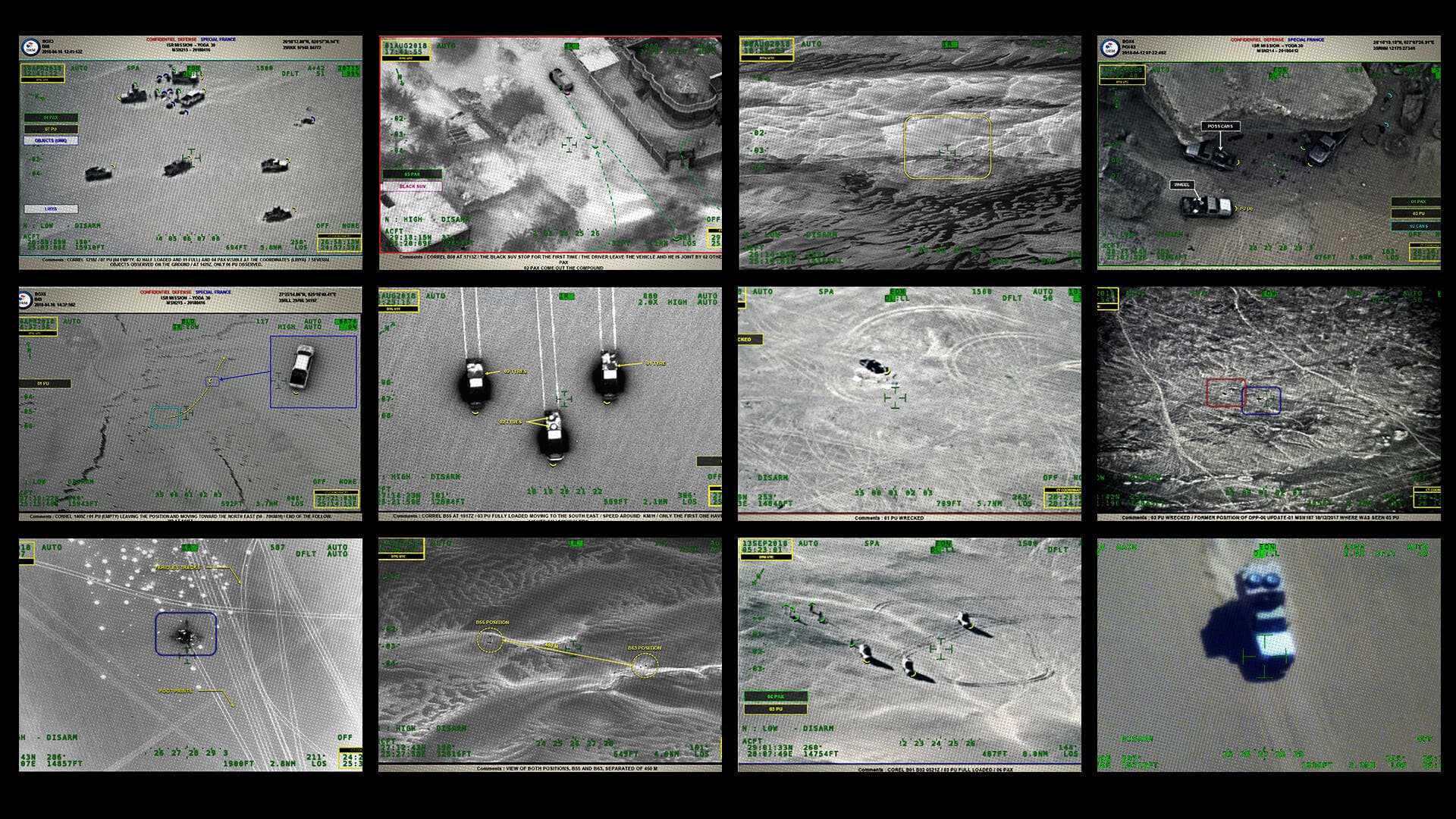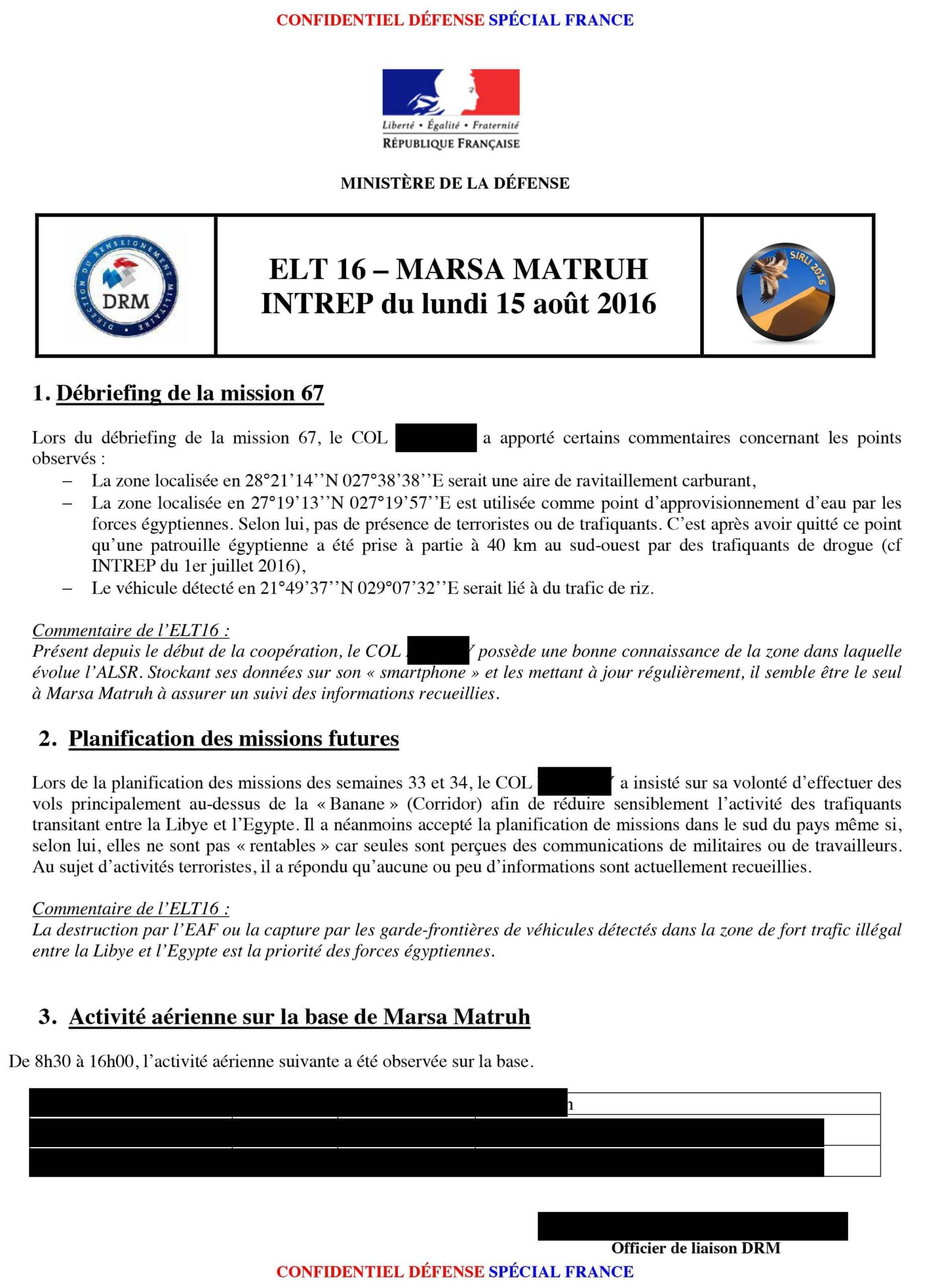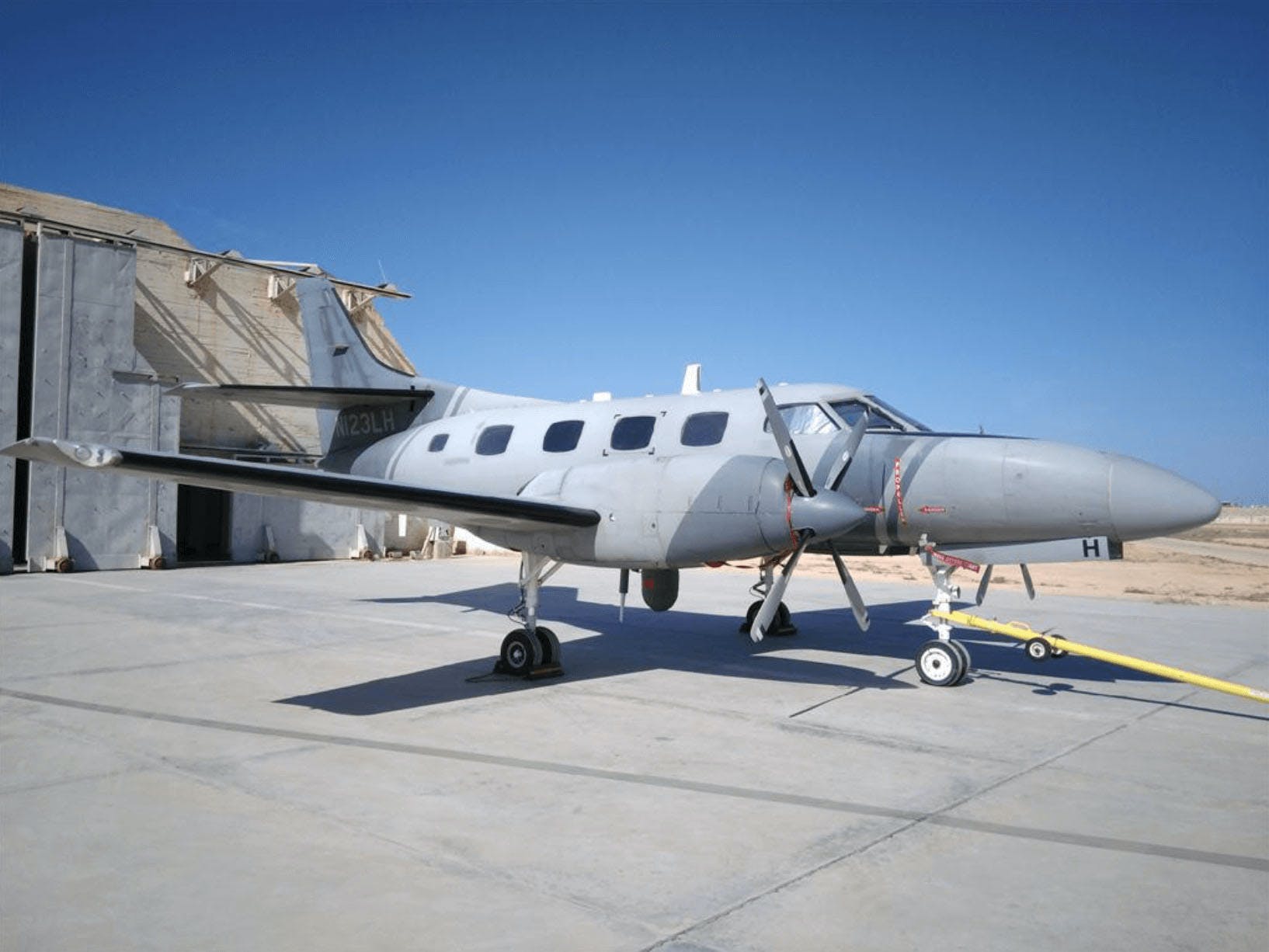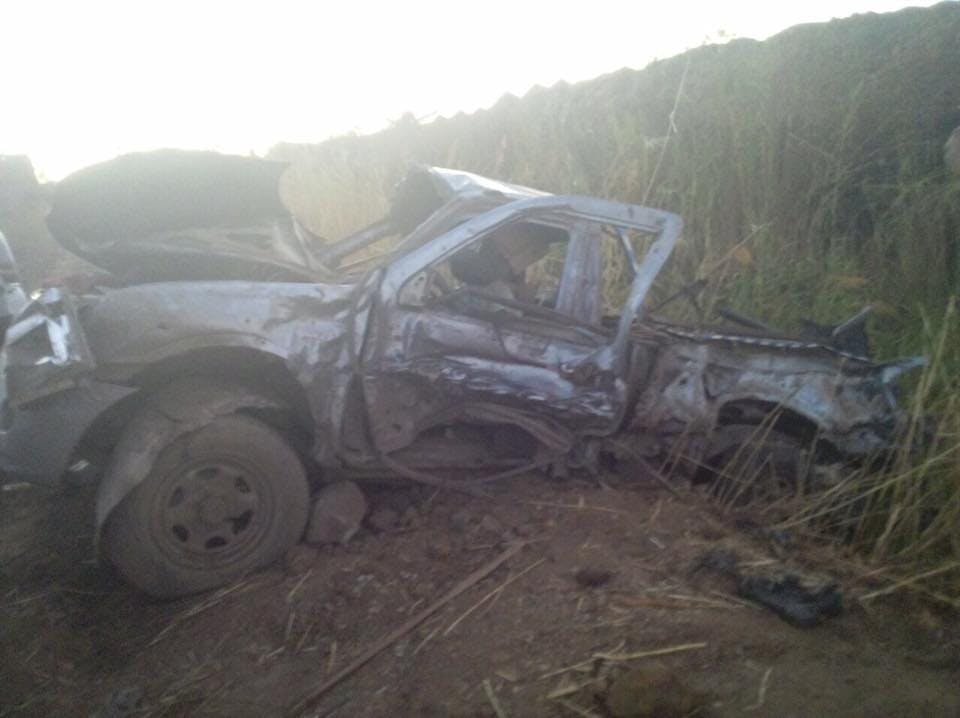in English
A journalist has been arrested for exposing the lethal cooperation between France and Egypt, which resulted in the deaths of many civilians

The French police arrested a journalist on Tuesday in connection with her report on the alleged French complicity in extrajudicial killings of civilians in the western Egyptian desert between 2016 and 2018, according to the investigative news site Disclose.
The journalist, Ariane Lavrilleux, a French citizen, is the co-author of the investigative series “Egypt Papers,” published in November 2021.
The investigation is substantial and deals with “Operation Sirli,” in which France collaborated with Egypt in operations initially aimed at counterterrorism between 2016 and 2018 but evolved into actions against smuggling between Libya and Egypt, resulting in numerous airstrikes against civilians. The Disclose website published a summary of hundreds of secret documents made public.
The Sirli Operation
The mission’s project, known as Operation Sirli, was conceived on July 25, 2015. On that day, Jean-Yves Le Drian, then the Minister of Defense under François Hollande, flew to Cairo with the Director of Military Intelligence, General Christophe Gomart. There, he met his Egyptian counterpart, Minister Sedki Sobhi, in an “extremely favorable context (…) based on the recent successes of the Rafale aircraft and FREMM frigates contracts,” as highlighted in a diplomatic note obtained by Disclose. In April, Egypt had purchased 24 Rafale fighter aircraft and two warships for a total of 5.6 billion euros.
The common goal of the meeting was to secure the 1,200 kilometers of border with Libya, which was in chaos. The Egyptian minister particularly mentioned an “urgent need” for aerial intelligence. Jean-Yves Le Drian then committed to implementing “operational and immediate cooperation” as part of a “comprehensive maneuver against terrorism.” It would take the form of an unofficial mission led by the DRM (Directorate of Military Intelligence) on an Egyptian military base.
All this was supposed to lead to a technical agreement between the two countries, clarifying the mission’s objectives and limiting the extent of shared information. However, this document was never signed.
In early 2016, a team was secretly sent to the western Egyptian desert, an area of 700,000 km2 extending from the Nile to the Egyptian-Libyan border. Operation Sirli was born. It mobilized ten agents: four soldiers and six former military personnel now in the private sector, two aircraft pilots, and four analysts employed by a surveillance aviation company, CAE Aviation.
Specialized in imaging and communication interception, the Luxembourg-based company also leased by the DRM (French Army’s inteligence service) CAE aviation owned and operated the centerpiece of the system: a light surveillance and reconnaissance aircraft Merlin III (ALSR). The cost of renting the ALSR, the light surveillance airplane, amounted to 1.45 million euros between July and December 2016. This could total 18.8 million euros to date.
In principle, the detachment’s mission, named “ELT 16” for “Technical Link Team 16,” involved scanning the western desert to identify possible terrorist threats coming from Libya. On each mission, the French were accompanied by an Egyptian officer whose task was to listen to intercepted conversations in real-time. In theory, the data collected should undergo cross-checking to assess the reality of the threat and the identity of the suspects.
Soon, team members realized that the information provided to the Egyptians was being used to kill civilians suspected of simple smuggling. They regularly alerted their superiors. For one year, then two, then three… in vain.
Doubts first arose just two months after their deployment, as indicated in a DRM (French Army’s intelligence service) report dated April 20, 2016. In this note, the liaison officer warned his superiors: the Egyptians wanted to “take direct action against traffickers.” The fight against terrorism seemed already distant.
Four months later, a new report confirmed the suspicions of the French military. Gradually, it became increasingly clear to the French that terrorism had nothing to do with it and that Egypt was using French activities to carry out brutal operations against smuggling.
According to Jalel Harchaoui, researcher at the Swiss NGO Global Initiative Against Transnational Organized Crime, the terrorist threat coming from Libya is “largely overestimated by the Egyptian army in order to obtain support on the international scene”. Since 2017, no terrorist group or group claiming to be Islamist has been established in the eastern part of Libya. “There is almost no evidence to suggest that ISIS or other groups are using drug trafficking to finance their operations in Libya,” also concludes a report by the European Institute for Peace published in May 2020.
“There are only civilians who are killed. Terrorists do not frequent this part of the desert, they are mainly concentrated in Sinai, in the far northeast of the country”
In the summer of 2016, the DRM agents were unambiguous: the mission was of little interest. Especially since the authorized overflight zones remain strictly limited to the western part of the country, where armed groups are almost non-existent. Sinai and Libya, where the terrorist threat is real, are forbidden to them. What a member of the Sirli team deplored at the beginning of September. The terrorists were elsewhere, for example in the Sinai, but this area was almost forbidden to thee French mission.
To satisfy its security obsession, the dictatorship always demands more. Like “the establishment of a short information transfer loop” between the French plane and the military base. Objective: to allow the Egyptian air force to arrive in the area to “treat” the target as quickly as possible. A request that worries the soldiers on site, but not the deputy research director of the military intelligence department, who agrees to reduce the delays in transmitting the data collected. From then on, specifies the officer who authored the September 3 note, “the involvement of the Egyptian air force in the destruction of traffickers was more visible.” The drift of the intelligence mission is confirmed: it will be used to target civilian vehicles.
According to secret documents obtained by Disclose, French forces were involved in at least 19 attacks on civilians between 2016 and 2018. Since these attacks often destroyed several vehicles, the number of victims could be in the hundreds. According to the criteria of United Nations General Assembly Resolution 56/83, France’s complicity in these extrajudicial executions would thus be established.
Macron’s Presidency
On May 7, 2017, Emmanuel Macron was elected President of the Republic.
Three weeks after taking office, the Head of State called his Egyptian counterpart. The call followed an attack that had occurred a few days earlier against Coptic Christians and was claimed by Daesh. According to the report of their conversation, it quickly focused on the military partnership between Paris and Cairo. Emmanuel Macron assured his interlocutor that he was “perfectly informed about ongoing operations” in Egypt, meaning he was aware of attacks on civilians.
The next day, the Chief of Staff of the Armed Forces, Pierre de Villiers, placed under the authority of the President of the Republic, received a “confidential-defense” note. Written by the then-director of DRM, General Christophe Gomart, this detailed report also pointed out that most of the pickups located in the Egyptian desert were not connected to terrorist groups.
The head of DRM then highlighted the “order of priorities” of Egypt. The fight against terrorism ranked only third in the mission’s objectives.
The partners’ order of priorities is as follows:
1 – Trafficking
2 – Illegal immigration
3 – Terrorism
When asked about these various points, Christophe Gomart, director of DRM until July 2017, assured that his services “have never provided any information that, to his knowledge, allowed the destruction of civilians or the execution of people.” He emphasized, “If I had made such an observation, I would have recommended stopping the mission and rechecking with the Egyptian authorities.”
Macron, through his Minister of Defense, still in 2018, praised the results and proposed an increase in the use of this instrument.
Almost a month after this self-celebration session, the “precision” of the Egyptian aviation killed three workers, including Ahmed El-Fiky, an engineer from Cairo and father of four.
On July 5, 2017, Ahmed El-Fiky and two of his colleagues – whose identities we could not confirm – were working on road paving near the Al-Bahariya oasis, which had 32,000 inhabitants. In the afternoon, while traveling in a pickup truck, they were hit by Egyptian aviation. The military covered up the incident, and the causes of the three workers’ deaths remain unknown…
Egyptian F-16 attacks, guided by French information, did not stop in 2018 but accelerated.
In early 2019, Emmanuel Macron and Florence Parly began an official visit to Egypt. On this occasion, the Head of State and his Minister of the Armed Forces were flooded with notes. One of them, written on January 19 by the Africa cell of the Elysée, reminded Emmanuel Macron of the “need” for a written agreement guaranteeing “a solid legal framework” for the team in the field. Another, addressed to Florence Parly, urged her to put an end to the excesses of the operation.
However, no agreement was signed, and the operation was still ongoing in the Egyptian desert.
In November 2020, Emmanuel Macron awarded Marshal Al-Sisi the Grand Cross of the Legion of

Grazie al nostro canale Telegram potete rimanere aggiornati sulla pubblicazione di nuovi articoli di Scenari Economici.











You must be logged in to post a comment Login